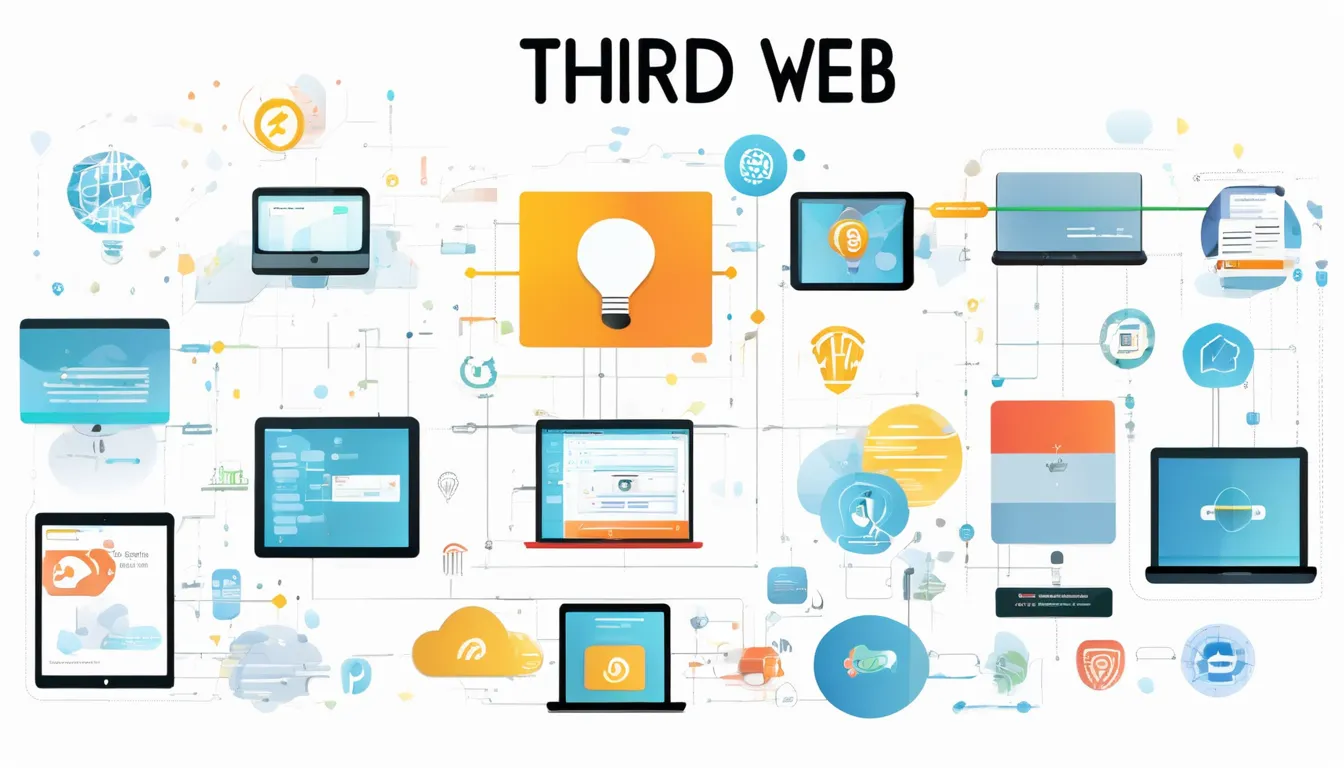As you consider integrating Web3 technologies into your existing systems, you’re likely aware of the potential benefits, such as enhanced security and transparency. However, you’re also probably aware that this integration won’t be seamless. Web3’s decentralized nature can clash with the centralized systems you’re used to, and the technical requirements are significant. But what are the key challenges you’ll face, and how can you overcome them? The integration process will require careful planning and consideration of design philosophies, data formats, and security models – but where do you start, and what are the essential steps to take next?
Web3 and Web2: A Comparison
When navigating the rapidly evolving digital landscape, you’ll often find yourself comparing and contrasting Web3 with its predecessor, Web2. Web2, also known as the social web, focuses on user-generated content and interactions.
In contrast, Web3 is centered around blockchain technology, peer-to-peer transactions, and decentralized data storage.
You’ll notice that Web3 offers several advantages over Web2, including enhanced security, improved data ownership, and increased transparency.
Web3’s decentralized architecture allows users to have full control over their data, reducing the risk of data breaches and unauthorized data sharing.
Additionally, Web3 enables peer-to-peer transactions, eliminating the need for intermediaries and reducing transaction costs.
While Web2 excels in user experience and content creation, Web3 offers a more secure, transparent, and community-driven alternative.
As you explore the differences between Web3 and Web2, you’ll begin to understand the vast potential of Web3 and its ability to transform the way we interact online.
Integration Challenges and Limitations
You’ve likely grasped the advantages of Web3 over Web2, but integrating these two systems isn’t as straightforward as it seems.
As you start planning the integration, you’ll encounter several challenges and limitations that can slow down or even stall the process.
One major hurdle is the fundamental difference in design philosophies between Web2 and Web3. Web2 systems are often built with a centralized architecture, while Web3 systems are designed to be decentralized and autonomous.
Some of the key challenges you’ll face when integrating Web3 with existing systems include:
- *Incompatible data formats*: Web2 and Web3 systems may use different data formats, making it difficult to exchange data between the two systems.
- *Different security models*: Web3 systems often use blockchain-based security models, which may not be compatible with traditional Web2 security measures.
- *Scalability issues*: Web3 systems can be slower and less scalable than Web2 systems, which can impact performance.
- *Regulatory compliance*: Web3 systems may not meet existing regulatory requirements, which can create compliance issues.
- *Lack of standardization*: Web3 systems are still evolving, and there’s a lack of standardization, making integration more complex.
Technical Requirements for Integration
Many technical requirements must be met to successfully integrate Web3 with existing systems. You’ll need to assess your current infrastructure and identify potential bottlenecks or areas that require upgrades.
This includes evaluating the scalability and performance of your existing systems, as well as their ability to handle decentralized data and smart contracts.
You’ll also need to ensure that your systems are compatible with Web3 technologies such as blockchain, IPFS, and decentralized identity management.
This may require integrating new APIs, SDKs, or libraries into your existing architecture. Additionally, you’ll need to consider the security implications of integrating Web3 with your existing systems, including data encryption, authentication, and access control.
It’s also essential to evaluate the data management requirements for Web3 integration, including data storage, retrieval, and synchronization.
You’ll need to consider how to manage data consistency and integrity across decentralized networks and existing systems.
Best Practices for Seamless Integration
To ensure a seamless integration of Web3 with your existing systems, it’s crucial that you adopt a structured approach.
This involves thoroughly understanding the integration requirements, identifying potential challenges, and establishing a clear roadmap for implementation.
When integrating Web3 with your existing systems, consider the following best practices:
- Start small: Begin with a limited pilot program to test and refine your integration approach before scaling up.
- Monitor and log: Implement robust monitoring and logging mechanisms to track integration performance and identify potential issues.
- Use APIs and SDKs: Leverage APIs and software development kits (SDKs) provided by Web3 platforms to streamline integration and reduce development time.
- Implement security measures: Ensure that your integration is secure by implementing robust authentication, authorization, and encryption mechanisms.
- Test thoroughly: Conduct comprehensive testing to identify and resolve integration issues before deploying to production.
Overcoming Interoperability Barriers
Integrating Web3 with existing systems often requires bridging disparate technologies, which can give rise to interoperability barriers. You’ll need to address these barriers to ensure seamless interactions between Web3 applications and legacy systems.
One approach is to use standardized APIs and data formats, such as JSON or GraphQL, to facilitate communication between different systems. You can also leverage blockchain-agnostic platforms, like Cosmos or Polkadot, to enable interoperability between different blockchain networks.
Another strategy is to implement data mapping and transformation techniques to reconcile differences in data formats and structures. This can involve using data integration tools, such as Apache NiFi or Talend, to normalize and transform data into a standardized Thirdweb mat.
You can also use cross-chain bridges or sidechains to enable the transfer of assets and data between different blockchain networks.
Conclusion
As you integrate Web3 with existing systems, you’re bridging two worlds. By understanding the differences between Web3 and Web2, addressing integration challenges, and meeting technical requirements, you’ll set yourself up for success. Following best practices and overcoming interoperability barriers, you’ll be able to create seamless connections and unlock the full potential of Web3. By doing so, you’ll future-proof your systems and stay ahead of the curve in a rapidly evolving digital landscape.



